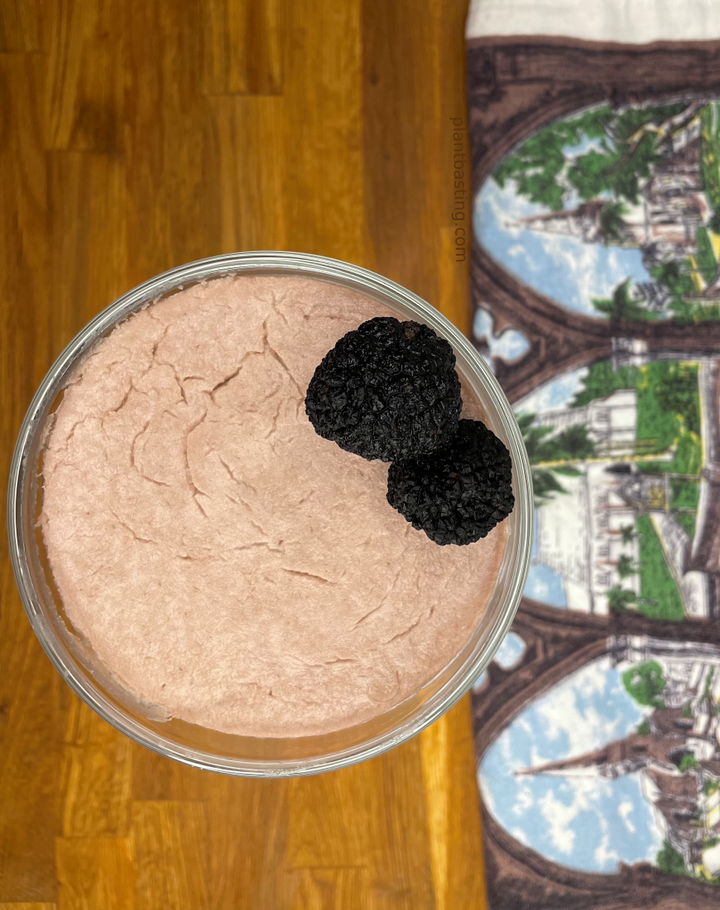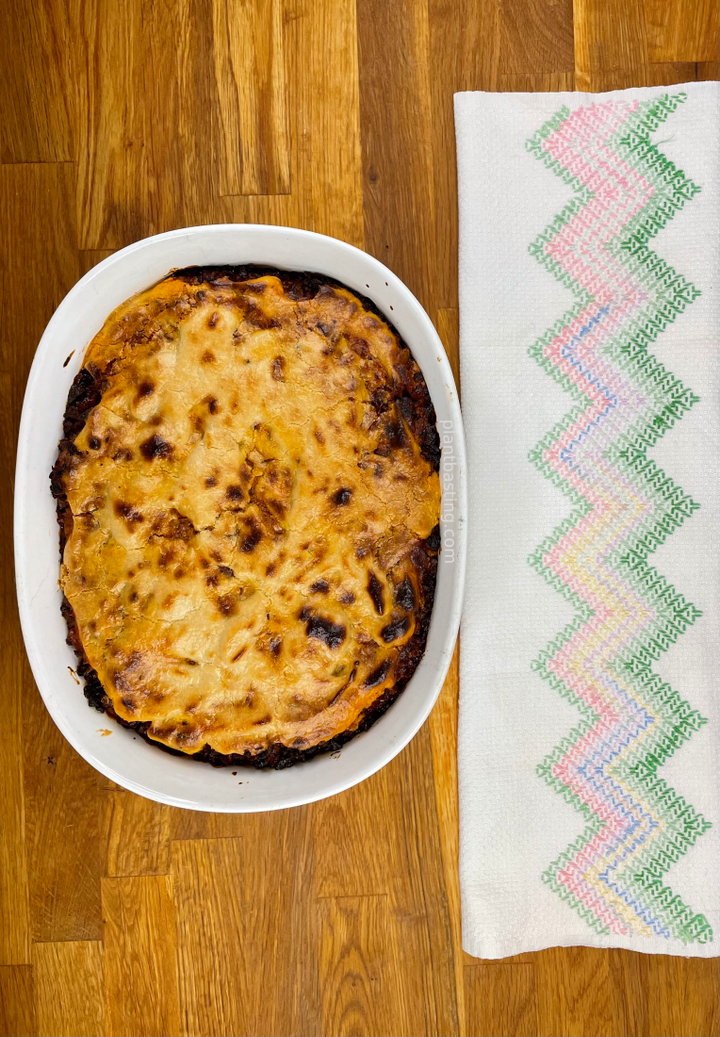#1 : How Ten Years Of Juicing Led To Jrip Juicery
Welcome to Plant Basting Talks, where we interview entrepreneurs in the vegan-friendly space about their story, what they’ve learned thus far, their business model, and revenue numbers.
In this first interview, Josh, the owner of Jrip Juicery shared with us:
- How 10 years of juicing has led to sharing it with the community
- How Instagram, art ability, and local markets helped Jrip grow
- The obstacles he's overcome, resources he's found helpful, and how he stays balanced
1. What made you start selling juice, popsicles, and sea moss gel to people outside of your friends and family?
What I thought was juice before wasn’t really juice. If somebody asked my mom what I drank when I was younger she may remember buying Mott's apple juice and me drinking out of the huge container. My environment growing up never really showed any true healthy outlets for people other than going to the doctor and listening to what they tell you or taking what they give you. There wasn’t much healthy food around other than fast food and stuff that’s just not meant for the body to consume.
The more I made juice for myself, the more I realized that Philly didn’t really have any healthy juice spots or even juice available at a cafe or something. At first it started as a hobby and part of life just exploring self for better health and trying to share any knowledge gained with my environment.
I only was making juice to begin with, and the ones around me kept giving me positive feedback over the years. Whenever they would be around, I’d just sneak some healthy stuff in their life like saying, “want some juice?” Who doesn’t want juice?
So many people were asking me when I was going to start selling juice that I started taking it seriously. I also was becoming more and more of a fan of the real juice, how I felt and watching how it helped others feel well.
Growing up my family was not very health conscious and once I started thinking about bettering my health and acted on it, I started just feeling healthier than I was before. Since the fake Mott's juice was such a part of my life growing up and all I ever see in stores is juice from concentrate, that’s pretty much what is pushing me to get real juice out there for everybody and so that they can start taking care of themselves and pay attention to all of the ingredients they put into their bodies.
Josh on when he started making seamoss:
I started making seamoss gel a few years ago and just recently put that into the mix with the juices because of the insane health benefits from it and having a great source for amazing seamoss.
How the popsicles came about:
The popsicles were totally my partner's idea. She actually ordered the molds for me to get it going and to eliminate waste so I could use most of my pulp and some juice to make the pops. I just wanted to make juice, but this summer my first trial run with the popsicles really popped off, kids and adults loved them, so I started making popsicles.
2. What went into putting together the initial product you sold to friends and family? The first non-friend/family member?
Initially I just started with bottles and jars that I had at my house and had my friends and family try that out. After that, before I started going to markets and such I knew I needed a logo and an Instagram, so I created those myself. Then I got some more bottles and stuck with a consistent 16oz bottle, eventually got stickers made and slapped my logo on the bottles.
3. What tools do you use to make your products? (i.e. Photoshop, type of machines you use to make product, or anything else)
All of the tools and anything used in making the products are NSF (National Santitation Foundation) certified. I started with a small juicer and have worked my way up to recently having a larger cold press juicer now.
The graphics and designs that I have and will be working on I do my self using Adobe suite.


The seamoss comes wild sourced from the St. Lucia area. There is a lot of farm made moss out in the world now, just like farm fish essentially, so I tell people double check where you get your seamoss from.
4. What is Jrip Juicery's Business Model?
Jrip Juicery is direct to consumer at the moment, selling at markets and taking orders through Jrip's Instagram DM's. Josh makes deliveries himself, which keeps the feeling of Jrip very intimate. He's also working on getting into retail locations, as he'll mention later in the interview.
5. How have you attracted Jrip customers?
Instagram has been a great tool, and I’ve been using my phone more as a tool now than ever since Jrip has been gaining more traffic. It’s to the point now that I don’t even want to waste time and energy scrolling on Instagram unless I’m using it as a tool for Jrip.
Farmers markets have been a great way to meet new people face to face and connect organically with people, which I love.
I use stickers as my business card so people can follow me on Instagram and I felt like business cards weren’t as fun.
6. How much revenue does your company generate per month? How have you grown your revenue?
Using Instagram has helped Jrip grow more and more, and having a consistent organic and authentic relationship with people who come back is a plus and the only energy Jrip could ask for. Since Jrip just recently started and due to all the start up costs there isn’t a consistent calculation on that. It’s hard to say, I could say that if I did maybe 4 markets a month Jrip made about $600-800.
I started to do the farmers markets conveniently when the co-op was doing them every Wednesday for a few months, so that was nice. It opened doors to more markets and more connections. For sure a slow process and I have had fruits go bad and juices that didn’t sell, but I would rather have $20 in my pocket in good health than $2 million in bad health. Sometimes there are big markets on the weekend that you can make $600 in that day, I hear from other people.
7. Is it important to you for your products to be vegan?
I honestly don’t believe in the whole “vegan” label even though that’s the easiest way to put it. If I go to a restaurant I’ll kindly let the server know I would only like vegan options. As you may know, there are plenty of unhealthy vegan things out here especially now. I see the marketing scheme behind all of the vegan labeling. It is hard though because we all are addicted to taste I think is what it comes down to.
I just believe in real food mostly. I think that’s the most important thing, to have real ingredients and nothing else. All real food can be called vegan but not all vegan food can be called real. So I tell people to be careful about “going vegan”. You still need to take care of yourself.
There's farm made seamoss gel out there now. Some people are now flavoring their seamoss gel with organic powders and adding agave to sweeten it. In my eyes I’m not sure why you’re introducing flavor and sugar to seamoss. I want to educate people on what seamoss is, for what it is. I don’t see the purpose in trying to get away from what seamoss really is and sweetening it other than just for somebody to capitalize on a health movement and trend. Same thing with Mott's apple juice that I grew up drinking, once I realized and had real apple juice for the first time my whole taste buds and perspective started to change. I’m hoping to open people’s eyes just as mine opened up a while ago to the health problems around us.
8. How did you originally decide on pricing of your products? Have rising prices or shortages of supplies affected Jrip Juicery?
I pretty much set a price from the beginning and didn’t want to do too many changes thinking that would effect things. The amount is bound to go up one day since money is constantly being printed, but I’m hoping to have the products at a great price for everybody. I also encourage people to bring back their bottles and jars for $1 credit off their next order to encourage recycling and a reusing mindset. I use eco plant based bags to hold the popsicles as well and am trying my best to reduce plastic.
9. What are the biggest challenges you've faced and obstacles you've overcome?
The biggest challenge was starting and taking it more seriously because it was hard for me to believe that people really loved what I was doing. It was more like a dream at first and then slowly started becoming a goal. The more I saw how people loved it and felt from the products, that was great feedback. I always like to see what peoples initial facial reactions are after their first sip of Jrip juice.
Another thing is pricing, organic food shouldn’t be as expensive as it is honestly, but to grow organically technically the farms have to pay so much money it is actually insane. There’s such an importance to having organic food I think that isn’t filled with GMOs or pesticides and such, so the organic part makes the juice a bit more expensive and the fact that I’m using glass and not plastic. I am working on getting wellness shot bottles so that I can have a really affordable little on-the-go wellness shot for those who may not be able to afford a 16oz bottle. I want good health to be accessible to everybody.
10. Have you found anything (resource, book, skill, habit, or bit of knowledge) that’s been valuable or useful for your entrepreneurial journey?
Every day is a learning experience honestly and I love it. I have been making juice for about 10 years now so I have picked up knowledge from experience, but I know there’s so much more. The human body is so complex, so I’m always keeping my ears and eyes open to new knowledge. Just jumping into this whole realm and environment has organically given me more knowledge and resources.
I’ve been meeting more people who are also focused on the health consciousness of things, both people who are newer to the game like myself, and also some people who have been in the game for a long time like Linda, the owner of Linda’s Vegetarian Village in Germantown. She is like the vegan/health Yoda to me. She’s been vegan for like 50 years or something wild, and every time I visit Linda’s I leave with so much knowledge and some of her amazing real food. Seeing people like Linda, who has stood strong for the good health of people, has helped remind me that I’m not alone in this journey.
11. How do you tend to your mental health as a business owner?
I tend to my mental health by making sure that I set some time in the day for myself rather than just work all the time. I try to stretch or do yoga or even just go for hikes with my dogs. Sometimes that can really give me the recharge I need. I’ll also make sure I’m drinking water and good food. Staying creative is also a huge aid to my mental health.
12. What’s your advice for entrepreneurs just starting out in the vegan-friendly space?
I think it’s great to see more and more people taking care of themselves and others, so I encourage people to do their thing and hopefully it’s really what they love. If your heart's in it, then things will work out organically. Keep going, you’re doing good.
13. Where can we go to learn more about you and Jrip Juicery?
Check me out on Instagram @jripjuicery, I post on my story a lot. In the future, my goal is to be doing wholesale so that it’s accessible to people at markets, corner stores, cafes, yoga studios, barber shops, and more. I get my orders through Kensington Co-op and I would like to start wholesale there in the future.
Interested in starting a vegan-friendly business like Jrip Juicery?
Sign up below to get an interview in your inbox every week!


